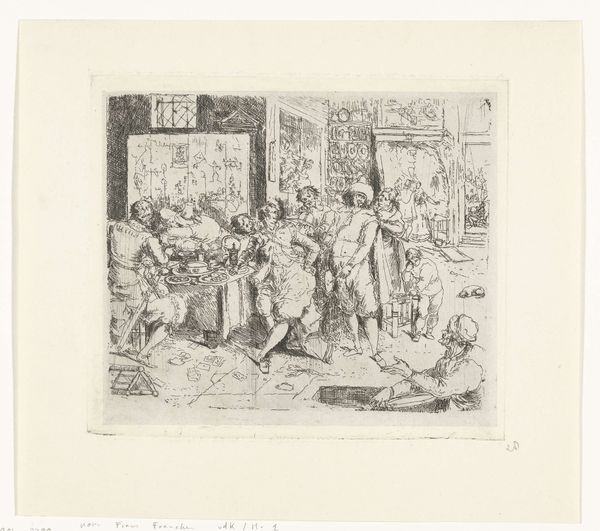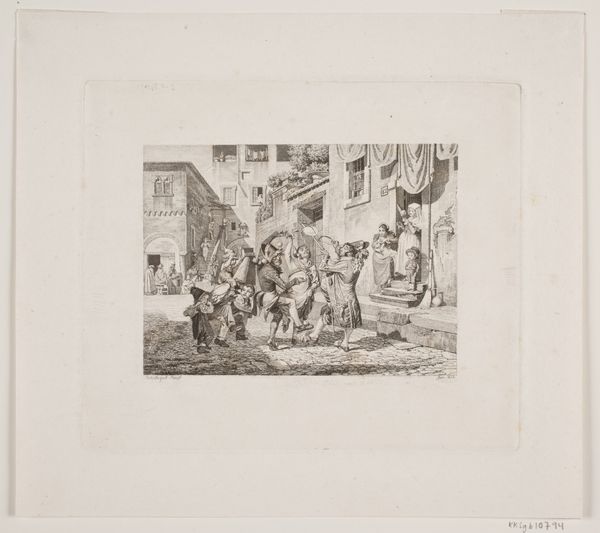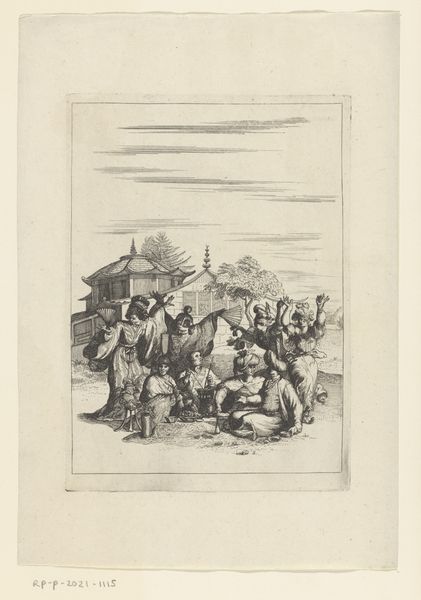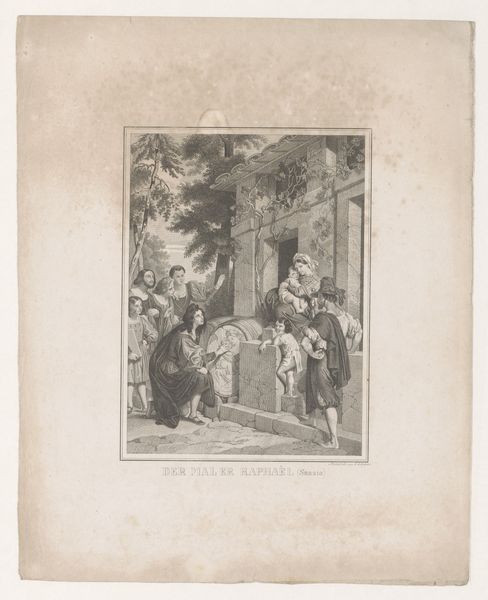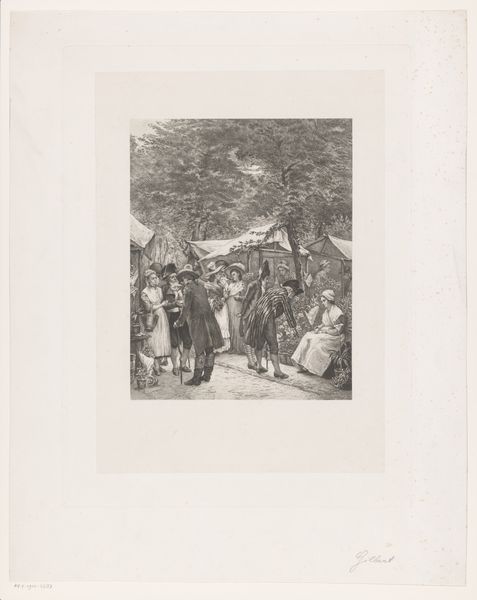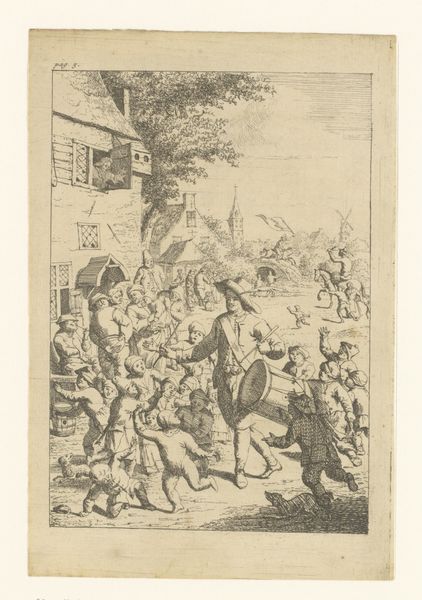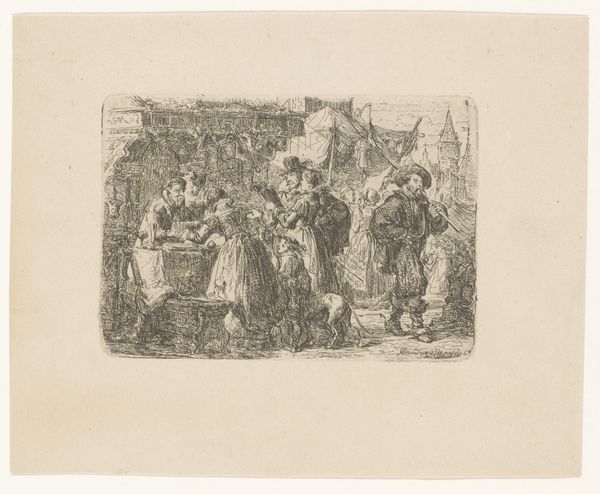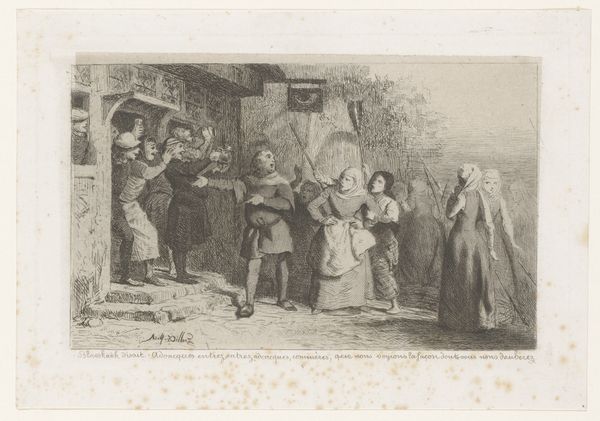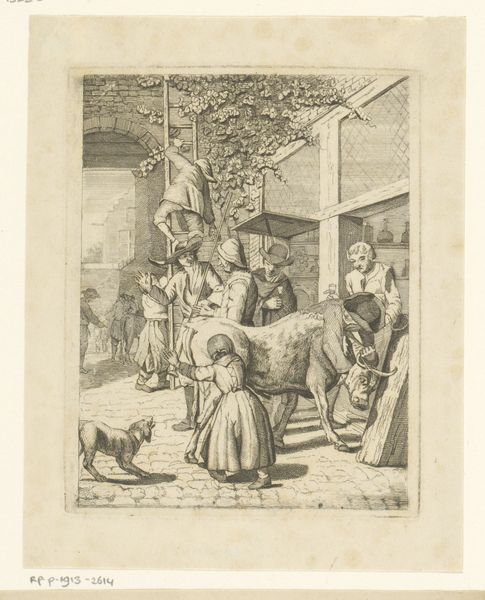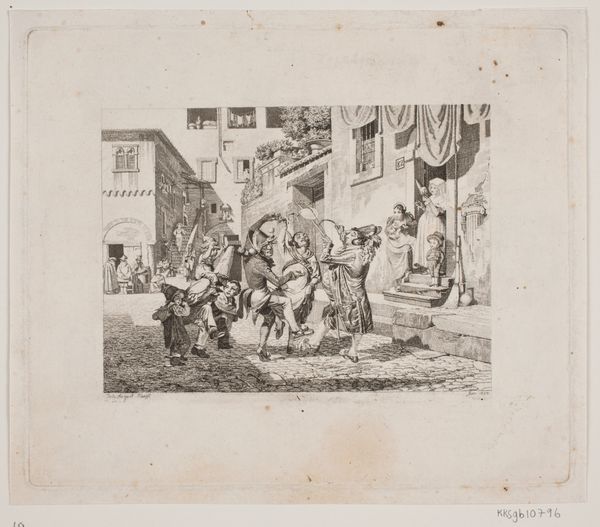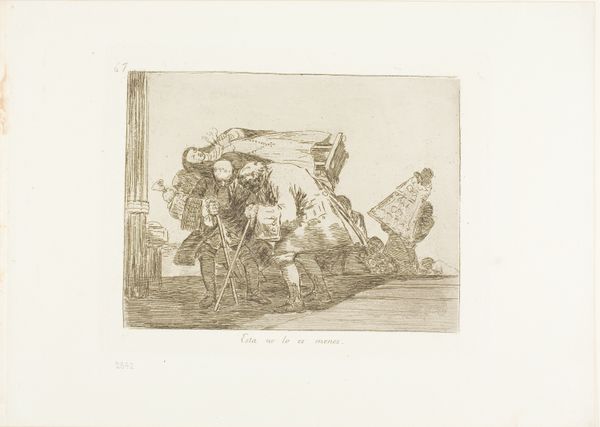
Pastoral Life of Saint Geneviève (right panel) c. 1888
0:00
0:00
drawing, lithograph, print, etching, paper
#
drawing
#
medieval
#
narrative-art
#
lithograph
# print
#
etching
#
landscape
#
figuration
#
paper
#
france
#
genre-painting
Dimensions: 499 × 299 mm (image); 703 × 504 mm (sheet)
Copyright: Public Domain
Curator: Before us is a lithograph, etching, and drawing on paper, created around 1888 by Georges-William Thornley, titled "Pastoral Life of Saint Geneviève." This is actually the right panel of a diptych. Editor: It's striking how Thornley uses monochrome to convey such a tranquil scene. The soft gray tones lend it a dreamy, almost nostalgic quality. What draws you in from a structural perspective? Curator: Immediately, the composition. It’s densely populated with figures yet achieves a visual equilibrium. The foreground is heavily weighted, but it opens up to a lighter, almost aerial background, giving the illusion of depth. There is clear, intended repetition within the lines and curves in the forms, as well as in their textures and tonal arrangement. The visual space seems balanced and complete unto itself, yet there must have been a dynamic contrast when shown as part of a diptych. Editor: It’s like peeking into an idealized past, really. Saint Geneviève is shown surrounded by acts of daily life, the family is emphasized in particular, and there's an obvious sense of community, of collective endeavor. Look at the well-worn expressions that are depicted upon the faces, as if pulled directly from daily experience. Note the ladders leading to storage—recalling stores for lean times—or the chickens and dogs scampering between people’s feet—symbols of fidelity and provision. The entire composition evokes a world of both earthly and spiritual sustenance. Curator: The level of detail Thornley achieves is remarkable given the multiple printing methods. He exploits the nuances of the lithographic stone and the etched line to delineate both form and texture. It’s a sophisticated printing process. The paper's surface undoubtedly contributes as well, providing a foundation for the tonal subtleties that are so noticeable. Editor: The visual language definitely harkens back to earlier interpretations of pastoral life but filters it through a late 19th-century lens. Consider Saint Geneviève as an enduring symbol of protection and community. It's clear the intent was not just representation, but an effort toward a re-connection with cultural memory, particularly through the imagery that invokes familial duty and societal roles within village settings. Curator: Yes, and by restricting the color palette, the focus is directed toward the structural elements: line, shape, value. This stylistic restraint elevates the mundane into the monumental. It asks the viewer to analyze the compositional decisions that inform their reception, more so than getting distracted by the image itself. Editor: Exactly. And I believe Thornley utilizes that very compositional clarity to reinforce the enduring presence of communal identity and spiritual reassurance through a symbol such as Saint Geneviève.
Comments
No comments
Be the first to comment and join the conversation on the ultimate creative platform.
